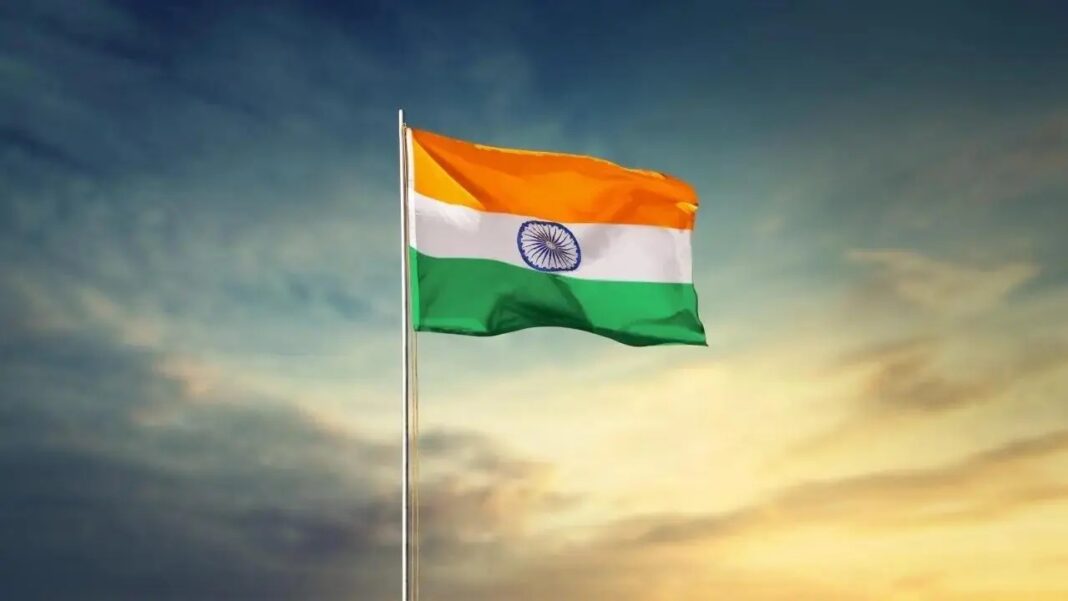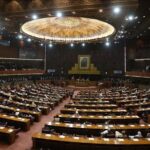In the early ’90s, India found itself on the brink of bankruptcy, grappling with one crisis after another. The nation was reeling from a series of traumas, notably the recent assassination of Rajiv Gandhi, marking the second Prime Minister to be murdered in a short period. The economic landscape was precarious, with the longstanding Nehruvian socialist policies proving ineffective. The collapse of the Berlin Wall and the dissolution of the Soviet Union shattered the euphoria and socialist romanticism of the left that had influenced India for decades.
This crucial moment in India’s history unfolded when Narasimha Rao assumed the role of Prime Minister, appointing the esteemed economist Dr. Manmohan Singh as his finance minister. Their shared mission was clear: to rescue India from the brink of an economic crisis. At that juncture, the Indian Rupee was overvalued, and foreign reserves were barely sufficient for a few weeks of imports, a critical concern for a nation heavily dependent on energy imports. Consider the implications if Dr. Manmohan Singh had not been at the helm of affairs—an India with a vast population left without essential petroleum products and other crucial imports, facing severe penalties for failing to meet external obligations.
Both Narasimha Rao and Manmohan Singh recognized that this was a trial by fire. The aftermath of the 1990-91 Gulf War had triggered a surge in oil prices, while remittances from Indian workers in the Gulf had dwindled. A fiscal deficit amounting to 8 percent of GDP and a current account deficit of 2.5 percent of GDP served as ominous ingredients in the recipe for an impending sovereign default. Faced with this dire situation, the government implemented two crucial measures. Firstly, in a bold move, substantial amounts of gold were airlifted, initially to London and later to Switzerland, as a means to raise funds. Simultaneously, seeking assistance from the International Monetary Fund (IMF) became imperative.
The challenges were formidable, but the leadership and strategic decisions during this critical period played a significant role in steering India away from potential disaster.
However, the most challenging decision lay in the depreciation of the rupee—an act that carried profound national pride and foreseeable political consequences. Narasimha Rao played an important role by providing the necessary political capital to endorse this difficult choice. The rupee underwent depreciation twice, strategically adjusted to align with the intrinsic value of the Indian currency, demonstrating the government’s commitment to stabilizing the economic landscape.
The true litmus test lay in rectifying the longstanding flaws embedded in the fundamentals of India’s economic policy, which New Delhi had adhered to for decades. The opportune moment arrived when Manmohan Singh took the floor of the Lok Sabha to present the budget. During this landmark budget speech, he unveiled a groundbreaking trade policy aimed at dismantling the age-old redundant policy—a major contributor to economic stagnation and corruption. Additionally, the policy set its sights on stimulating exports, marking a decisive shift in economic strategy.
On the same day, the government introduced a transformative industrial policy that proved to be a game-changer. Abolishing the license quota raj entirely, this policy ushered in a new era by relaxing rules for mergers and amalgamations, putting an end to public sector monopolies in various sectors. Notably, it allowed foreign direct investment to rise to 51 percent, compared to the earlier cap of 40 percent. Public sector monopoly was now confined to a select few sectors deemed critical to national security, and industrial licensing was eliminated for all industries, with only 18 exceptions. This comprehensive overhaul signaled a bold departure from the past, setting the stage for a more dynamic and competitive economic landscape.
These strategic measures played a key role in propelling India into its current status as an economic powerhouse. Presently, India stands as the world’s fifth-largest economy, boasting some of the highest growth rates globally. Beyond its borders, India expanded its sphere of influence, showcasing adept civilian leadership under the successive Congress governments and Vajpai-led BJP governments that skillfully capitalized on opportunities amid rapidly evolving geopolitical scenarios.
The pursuit of strategic autonomy has been instrumental in garnering support from various quarters, a legacy that traces back to the Cold War era. Despite the 1962 conflict with China, which brought about significant humiliation and embarrassment, India managed to forge closer ties with the United States. Remarkably, India has continued to maintain a delicate balancing act between the United States and Russia.
However, is everything in perfect harmony? Not quite so. A turning point arrived when, following a series of electoral setbacks, the BJP brought Narendra Modi, then Chief Minister of Gujarat, to the center stage. He was nominated as the party’s candidate for Prime Minister and went on to lead the BJP to a resounding victory in 2014. Subsequently, a twist in the narrative of India emerged, marking the commencement of a new chapter. The nation gradually and subtly started moving towards a state that was not originally envisioned by its founders and the architects of its constitution.
Owing to its cultural, political, and economic diversity, Dr. Ambedkar had envisioned India as a secular state, aligned with Nehru’s vision. This vision had served India well in achieving many of its objectives and is integral to the country’s integrity. Deviating from this path poses several challenges for India in the future. The unfolding situation has raised concerns in many countries, including Pakistan, observing the shifts in India with a heightened sense of apprehension.
Despite the longstanding animosity between India and Pakistan, there exists a recognition in Pakistan that it is in their national interest for India to remain a stable country. Any signs of volatility to the east of Pakistan prompt considerable anxiety within the strategic community. Similarly, Indians harbor a similar sentiment when concerns arise in Pakistan. This unspoken and unwritten rule forms the basis of a strategic equanimity between the two states. Beyond a certain threshold of tension, active efforts have consistently been made to de-escalate situations and restore normalcy, despite the enduring political problems and disputes that persist between the two nations. This unspoken understanding acknowledges the shared interest in maintaining regional stability, even amidst historical grievances and ongoing challenges.
Returning to the initial question of what sets Modi’s India apart from its historical context, the answer is far from straightforward. It compels the conclusion that today’s BJP has markedly diverged from the legacy of the Vajpayee-led BJP. The fervor to retain power and unchecked ambitions have driven Modi’s team to delve into political opportunities that were previously dormant and buried within the fault lines of Indian society.
For decades, these fault lines went largely untouched, but the present desperation and heightened ambition have propelled the BJP to a level where certain individuals associated with the party openly advocate for a project aimed at transforming India into a Hindu Nationalist country. This endeavor not only alienates millions of citizens but also carries a track record of sparking violence and unrest. Contemporary India appears more polarized and less tolerant of dissent, with many journalists feeling marginalized due to current policies. The political landscape has shifted, marking a departure from the more inclusive approach observed in the past.
The prevailing ideology is undeniably hindering the aspirations of Indian policymakers to attain great-power status. Hindutva, the philosophy of the RSS founder, is undergoing a transformation through the rebranding of a new term, Sanatan Dharma, which they struggle to adequately define. The unsettling trend of resorting to violence and employing bulldozers to reduce minority properties to rubble has become a disturbing norm, with a method seemingly underlying this madness. While numerous incidents could be cited, a detailed discussion of them is reserved for another article.
Another significant challenge lies in the fact that, in Indian politics, Pakistan is consistently made an electoral issue. To transcend the current situation, India must break free from the mindset of using Pakistan as a convenient political tool during elections. This habitual approach has perpetually hindered India’s ability to address its outstanding issues with Pakistan. The incessant sloganeering against Pakistan and the persistence of the “Akhand Bharat” dream need to be buried deep in the past for India to evolve into a responsible and credible state.
Serious scholars must critically assess the implications of hawkish policies designed to mobilize voters from the majority community. Short-sighted strategies for immediate electoral gains may set off a chain reaction with far-reaching consequences throughout the country. The repercussions on the economy and the sentiments of foreign investors are not difficult to comprehend.
Several analysts argue that the proximity between wealthy Gulf states and India has emboldened New Delhi to adopt a harsh approach towards Muslims. However, it’s crucial to recognize that Gulf countries cannot sustain close ties with India solely based on economic interests. Such an approach could lead to dissatisfaction among their populations. Currently, there have been no concerted efforts to sensitize the local population about the state of Muslims in India. Any potential endeavours in the future may yield different outcomes.
In the pursuit of global ambitions, more responsibility and prudence are required. The current scenario suggests that India risks losing its position on the global stage due to imprudent policies. Despite India’s attainment of the status of the fifth-largest economy globally, the persistently low per capita income, coupled with various socio-political challenges, exposes significant vulnerabilities. Policymakers must consider the long-term consequences and work towards fostering inclusivity.
Salman Lali is a contributing fellow at CommandEleven. As an experienced journalist and communications expert, Salman brings over 13 years of expertise. His focus areas include public policy, defense, international politics, and the global economy. With a keen interest in key regions such as India, China, the Middle East, Turkey, and the United States, his analyses capture the complexities of dynamics surrounding these regions. Having worked with respected broadcast houses in Pakistan, he currently serves as a communications consultant to both public and private sector clients.









